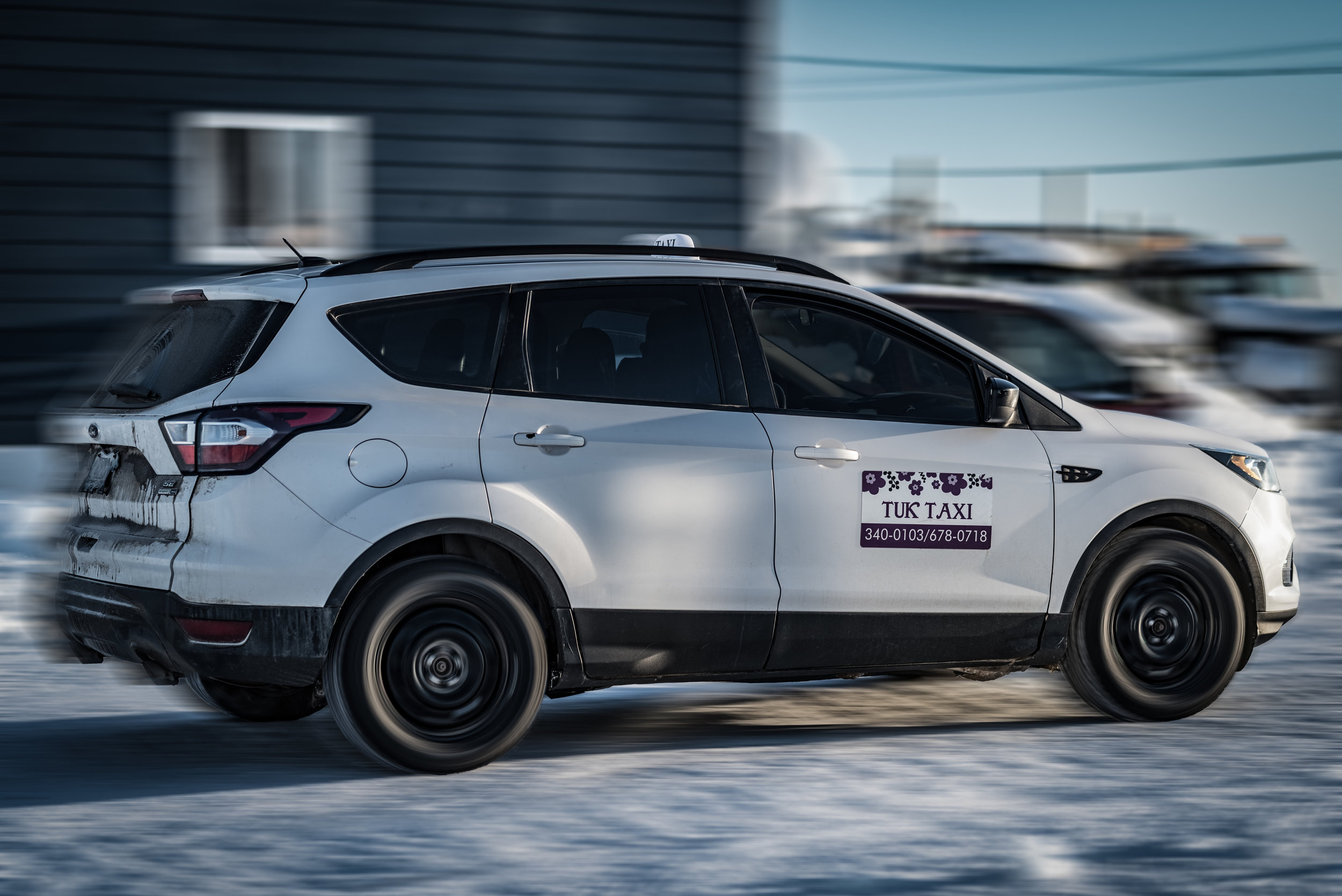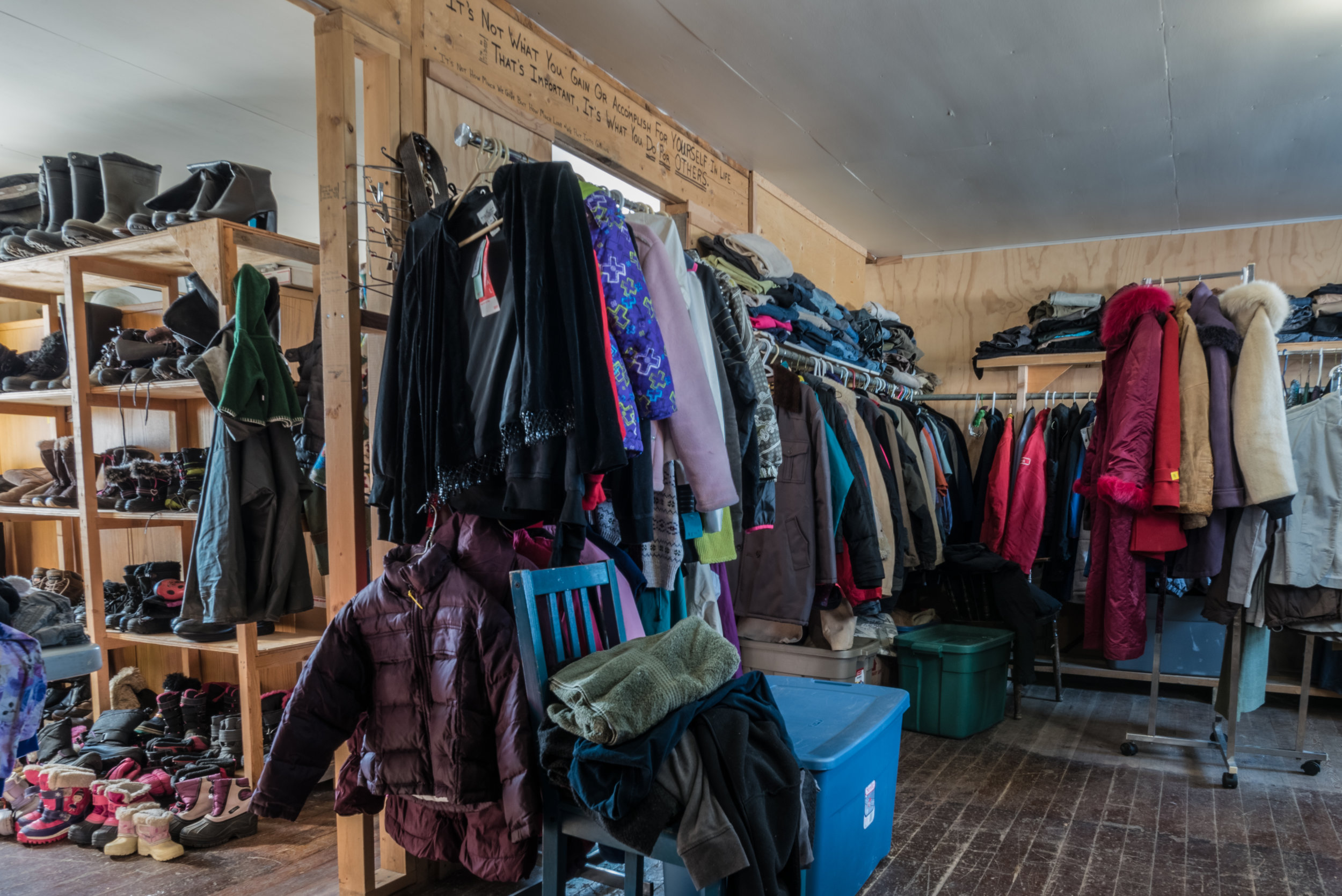

















There are about 20 people on the wait list for housing units. Most of these are for single room units to house the large, increasing youthful population. Currently 162 of 165 housing units are occupied, with a handful in transition or undergoing repairs. “We try our best to provide healthy safe housing. If the community pooled together we could do so much more and better”. -Veryl Gruben

The Tuk DEA (District Education Authority) breakfast program is part of the healthy foods initiative and funded through the government of the Northwest Territories. The program runs 5 days a week from senior kindergarten to grade 12 and sees about 120 to 160 daily participants.
“I think it’s very much needed in our school and community. We know not all children get it at home. With more funding we would love to offer a warm lunch and continue the program to the afternoon.”

What is a good thing to do while sitting at the nursing station, waiting for your appointment? How about learning about current medical issues? The Tuk nursing station has an ever changing wall of reading material in their waiting room. These readings range from bulletins to tri fold poster presentations, prepared by both the government, and youth from school projects, on relevant community issues.

The Mangilaluk School is a single unit facility for grades Kindergarten to grade 12 and has about 225 students. The school has an Inuvialuktun language teacher, as well as elders that come into the school to teach cultural lessons like sewing. There is also an on-the-land coordinator, who teaches and arranges cultural outings, such as the Husky lakes trip that all grades participated in over the course of a week, as part of a cultural learning exercise.

The women’s shelter recently moved to an upgraded building and boasts more security than the former location. The shelter is staffed 24 hours a day and has 4 rooms. Should a women need to leave an unsafe or abusive relationship this gives a safe place for them and their children. Once at the shelter they have added resources at their disposal as well as the assistance of the shelters workers.

Tuktoyaktuk draws its water from Kudlak Lake. The lake water goes through a class 1 treatment plant before it is delivered to houses in the community by truck. The house’s tank size and water consumption of the household determines how long the fill up will last. Some households may require daily deliveries, where some can go a few days on a tank of water. Tuktoyaktuk’s water treatment plant was described by someone who recently retired in the field as being very sophisticated.

Going Solar! The Hamlet of Tuktoyaktuk mounted 98 kW’s of solar capacity to their office building last year. Tuk’s two percent of the Northwest Territories population represents just over five percent of the 1885 kW of solar power generated in the Territory - offsetting diesel that was formerly used.

“If you build it, they will come” Although a mis-quote, it certainly has been the case after the completion of the Inuvik to Tuktoyaktuk Highway. Tuktoyaktuk saw an estimated 6,500 visitors the first summer the road opened the way to the Arctic Ocean. It is anticipated that this year that number could reach 15,000. The Hamlet made investments later in the summer of 2018 and hope to recoup those costs in the summer of 2019.

An infrastructure project that is currently in the works is an add-on to the arena. This addition will house a gym facility, as well as an upgraded space for the Zamboni. It will provide new recreational activities that don’t currently exist for both the adult and youth population in Tuk. The gym will also assist in the efforts of achieving a healthier lifestyle for those who make use of it. This 24 hour card lock addition comes with $1.2 million price tag.

The Child Development Center in Tuktoyaktuk has free child care for children ages 6 months to 5 years of age. Babies 6 months to age 2 on one side and toddlers 2 to 5 on the other. Selection for one of the limited spots in the day care follows a ranking system where student/employment status are taken into consideration. For example, a working family supersedes a non-working family and students at the school are also given priority. This care is open to any residents of the community and allows for a person to work, or attend school. Without the child development centre this would not be possible for many members of the community. The child development centre provides early education and play for the children, with periodic after-hours information sessions from qualified professionals, for the parents and families.

Not everyone has a vehicle or access to a vehicle in the community and this gap is filled by locally run taxis. Fares are fixed rates; $6 in town and $15 to Reindeer point, a smaller part of the community about 7 kilometres outside of the main community centre. A driver explains that it can be busy, especially when money comes out and people need to get groceries or to their appointments. The flat rate fares in town are cheaper than many southern locations especially when you factor in their km/rates added to the fixed rate, and take into consideration that our northern communities have some of the highest gas prices in North America.

Quyallidaluat is a thrift store that receives donations from the community as well as other sources, but mostly Edmonton. The Quyallidaluat is operated by Sister Fay Trombley a volunteer who provides items to the members of the community in need at little or no cost. The majority of the items are winter clothing, which is important with the cold Arctic winter temperatures. Quyallidaluat is suitably translated to “makes people happy / a help”

Military divers from five counties visited Tuktoyaktuk to test various equipment in Operation Nanook-Nunalivut. They had to cut through the ice, now late in the winter season, to get to the water to test the equipment in the harsh climate. One individual involved stated “the ice was only 39” thick” and was shocked to find out it was that thin.

The Inuvialuit region recently completed a major construction project, the Inuvik Tuktoyaktuk Highway connects Inuvik to Tuktoyaktuk by an all season road that twists throughout many of the water bodies in the Beaufort Delta. Extensive studies were done prior to the start of the project, one of them, a fish, and fish habitat protection plan was put in place that includes still ongoing studies. Further steps were taken with planning a route that keeps the road a specific distance away from water. Steps were made to protect the permafrost as well, by not using the traditional cut and fill approach and instead only using a fill approach.

Poaching is an issue in the Tuktoyaktuk region, John Lucas the Environmental and Natural resources officer explains, after completing paperwork with two hunters for two poached Polar bears. Mr. Lucas goes on to explain that it is mostly caribou that is poached as the community only has 75 tags each year and points out some of the closed zones on the maps on the wall. The new Inuvik-Tuktoyaktuk highway may increase poaching as it goes through a closed-zone-area for Caribou but is patrolled frequently throughout the year.

By the summer of 2019 the Northwest Territories aims to have 911 implemented for all of the 33 communities. Though the new system won’t feature all of the perks that we see with southern 911 systems, there are plans to see a similar fully operational system in the future for the communities. As it stands right now, to access any emergency services you need to know the community’s local 3 digit dialling code followed by 1111. This can cause issues for community members in a highly stressful situation but more so could be devastating for tourists and visitors who are not aware that 911 doesn’t exist here or those that do not know the alternative method to reach emergency services. The Northwest Territories will be the second territory to have a territory wide 911 system, following the Yukon who implemented one in 2016.

The Hamlet of Tuktoatykuk and the Council consult with the public on formulating plans for the future. They work together with government and non-government agencies in efforts to better Tuktoyaktuk. They have also been working with the Tuktoyaktuk Community Corporation on a Strategic Plan.
